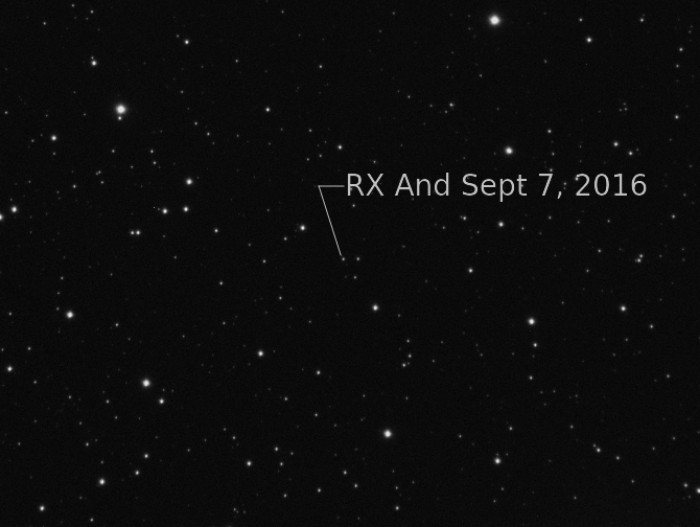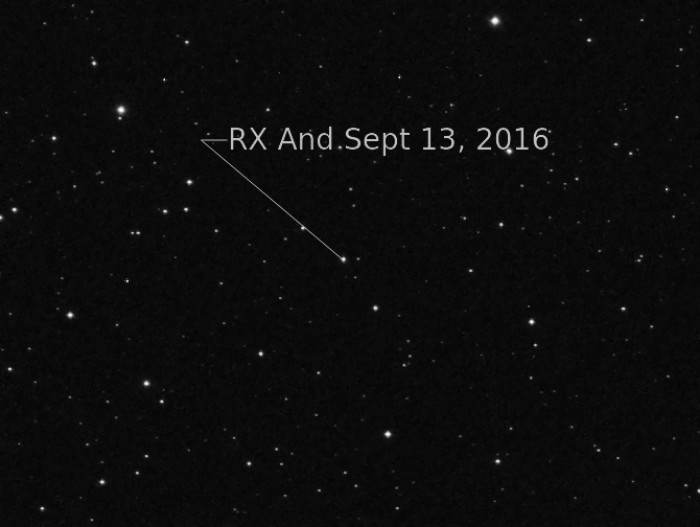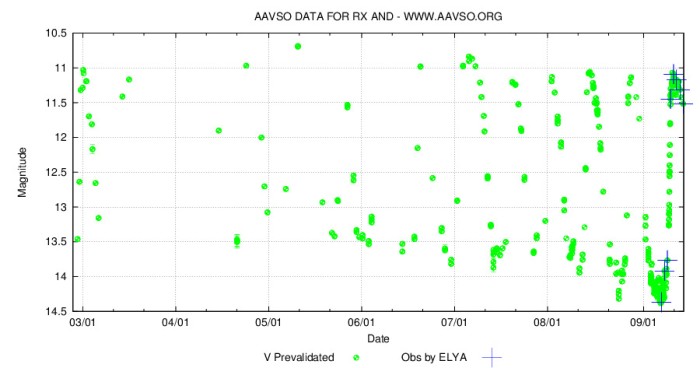RX And is a recurring dwarf nova star located in the constellation of Andromeda. Currently classified in the class of Z Camelopardalis variable stars, it consists of a white dwarf with an accretion disk siphoning matter from a secondary dwarf star. Once the accretion disk reaches a certain threshold, it becomes very bright until it can slowly cool back down. Usually this cycle takes from 10-13 days for RX And, but occasionally it gets stuck in a bright mode for periods for days to even years.
As part of an AAVSO optical monitoring campaign in support of Chandra X-Ray observations, I've been taking photometric measurements once a night. The star normally varies from as dim as 14.8 to as bright as 10.3 magnitudes. With a quick rise time in under 24 hours, sunscreen would be an essential item for anyone near this star system. My exposure times went from 480 seconds at its dimmest to 50 seconds near its brightest. All images were taken through a "V" filter which is a standard green band pass filter used for observations with the 80 mm refractor.
Image taken the morning of September 7, 2016. It's magnitude was around 14.34 at the time, or about the same as the other stars near it. I needed an exposure time of at least 480 seconds to collect enough signal for an accurate reading.

By the morning of September you can see that now the star is much brighter than its nearest stars. It was then at a magnitude of 11.31 and using an image exposure of 50 seconds to keep from saturating the ccd pixels. The actual rise time took less than 24 hours to brighten to 11th magnitude.

An AAVSO chart of observations of RX And by different users, with my observations marked by crosshairs. It's easy to see the fast rise and fall times of the brightness changes.

It's been an interesting project for me.